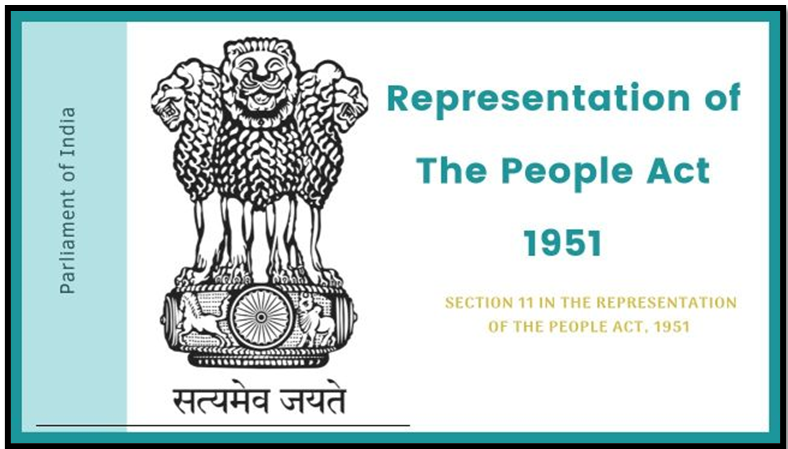“UNDERSTANDING UNCONTESTED ELECTIONS, NEGATIVE VOTING, AND THE IMPACT OF NOTA”
Syllabus:
- GS-3-Representation of people Act , 1951 and its analysis
Focus :
- BJP’s uncontested win in Surat constituency, Gujarat.
- Explanation of how a candidate can be declared elected before polling according to Section 53(3) of the Representation of the People Act, 1951.
Source- GoI
Introduction
- Uncontested Elections- Legal Framework and Procedure-Explanation of Section 53(3) and Section 33 of the Representation of the People Act, 1951.
- The role of the Returning Officer (RO) in verifying
nomination papers-on the Handbook for Returning Officers issued by the Election Commission (EC) and its guidelines for uncontested elections.
- Importance of adherence to nomination procedures and implications for candidates.
About RPA,1950 :
About RPA, 1951
|
Scope for Negative Voting in the Election System
- Overview of negative voting options: NOTA (None of the Above) and Rule 49-O.Explanation of Rule 49-O allowing electors to decide not to vote.
- Implementation of NOTA on electronic voting machines (EVMs) since 2013 following a Supreme Court verdict-PUCL case
- CJI’s remarks on the importance of NOTA in expressing disapproval of candidates and its potential to influence parties.
- Comparison between Rule 49-O and NOTA in terms of secrecy and procedure.
- EC’s stance on NOTA votes not affecting the outcome of elections.
Developments Post-NOTA Implementation
- Instances of NOTA receiving significant votes compared to political parties.
- Criticisms of NOTA as a “toothless tiger” with no real impact on election results.
- Discussion on NOTA’s utilization in State Assembly and Lok Sabha elections over the past five years.
- Supreme Court’s response to a plea seeking fresh elections in constituencies where NOTA votes were in the majority.
- Shiv Khera’s plea to debar candidates polling fewer votes than NOTA from contesting elections for five years.
NOTA in Local Bodies’ Polls: Maharashtra’s Approach
- Maharashtra State Election Commission’s order regarding NOTA in urban local bodies’ polls-Declaration of NOTA as a fictional electoral candidate and the provision for re-polling if NOTA receives the highest votes.
Conclusion and Implications
- Summarization of key points regarding uncontested elections, negative voting options, and the impact of NOTA.
- Reflection on the legal framework, electoral practices, and recent developments.
- Discussion on the potential implications of NOTA and proposals for electoral reforms.
- Consideration of the Supreme Court’s involvement and potential changes in electoral rules and regulations.
Source:The Hindu
Mains Practice Question :
GS-3
“Discuss the legal framework and procedural aspects of uncontested elections in India, with reference to recent events such as the BJP’s uncontested win in the Surat constituency.”(250Words)




